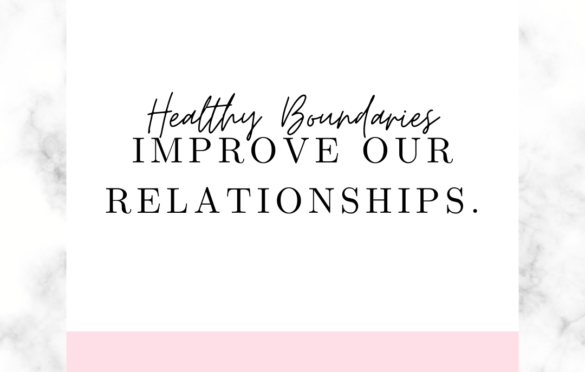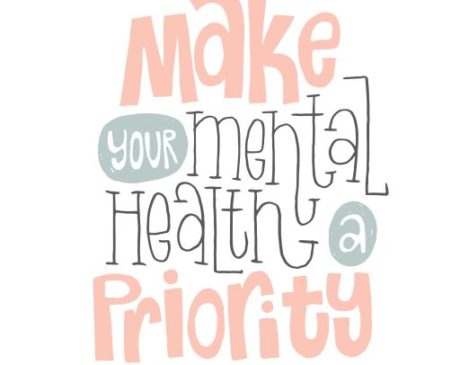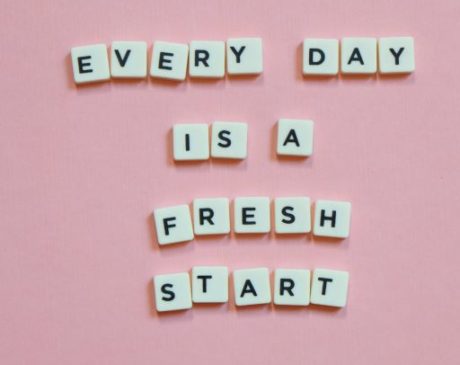Boundaries Vs. Control

If you’ve been a part of the conversation surrounding mental health in recent years, you’ve likely heard about boundaries, the limits people set to create personal space. Implementing healthy individual boundaries can empower us to know who we are and what we will accept, while observing the boundaries of others can help us maintain positive relationships. But what happens when boundaries begin to feel like control? How do we distinguish if we’ve encountered a healthy limitation or a manipulative tactic?
If you’ve faced this situation, you know what it feels like to be given a “boundary” that is essentially an ultimatum. The other party may issue this warning under the guise of self-protection but at its core is the desire to control the situation by dictating the terms of the relationship. Conversely, we may have tried to enforce personal boundaries that were more about governing another person than honoring ourselves. There can be a thin line between healthy boundaries and controlling behavior, and it is not always easy to differentiate between the two. Fortunately, there are questions we can ask ourselves to decipher if we’re experiencing a healthy limitation or manipulation, whether we are creating the limit or adhering to it.
#1) Who Is This Boundary For?
Amber Hollingsworth of Put the Shovel Down has a simple and profound way of making the response to this question crystal clear. In her YouTube episode, Boundaries vs. Controlling, she likens boundaries to a fence. “It’s perfectly ok to build a fence around your own backyard, but it’s pretty much not as acceptable to build a fence around your neighbor’s backyard.” Thinking of boundaries in this context can help us determine if the limitation we are experiencing is a healthy one. If we’re implementing the boundary, we should focus on what we feel. If we are adhering to another’s boundary, it should be respectful of us as participants in the relationship. Healthy boundaries serve all parties involved. They are not one-sided demands that only consider one person’s comfort.
#2) Has This Boundary Been Stated?
What seems obvious can become complicated because all boundaries aren’t always stated. Consider this scenario: In your workplace, you have probably never expressed to your boss that you will not tolerate physical abuse because workplace violence is socially unacceptable and assumed to violate anyone’s boundaries. However, there are instances where socially acceptable behavior can contradict an individual’s personal boundaries, creating the need for that boundary to be explicitly stated.
This need for boundary expression can become particularly important in relationships that span years. It’s not unusual for parties to grow and evolve, resulting in a shift in boundaries. And while this can often cause friction in relationships, if we learn to communicate our boundaries effectively, it doesn’t have to. Expecting another person to know what you will tolerate without expressing it, and then punishing that person for not meeting your standards is behavior akin to gaslighting and stonewalling. In the latter, parties refrain from communicating for various reasons, including to gain control of the situation. If you find yourself struggling in a relationship where you are being punished for crossing unstated boundaries, you may want to reconsider if both the boundaries and relationship are healthy.
#3) How Is This Boundary Being Presented?
Because healthy boundaries do not demand; instead, they exist. They are personal limits that help us trust our intuition and honor what is best for us. Boundaries that begin, “If you don’t…” are more likely than not unhealthy. This type of verbiage places the responsibility of meeting our demands on other people instead of honoring what we feel and will allow. True boundaries are framed to honor ourselves, and as such, are better articulated in this way: “If I feel….” This shifts the focus onto the person creating the boundary and ensures that it will be a standard for everyone to follow.
#4) Is This Boundary Intended to Change Someone?
The boundaries we set for others should never interfere with them being themselves. James Preece, author and coach, explains, “anything that limits another person’s options is an unhealthy boundary.” For example, your partner’s boundaries should not include a dress code for you. This is limiting behavior that is focused on another person – not themselves. We should never implement boundaries to prevent a partner from following free will. It is better to release a relationship that isn’t compatible with our principles and values than to force someone into behavioral standards they cannot maintain.
#5) Does This Boundary Improve the Relationship?
Healthy boundaries do. They are implemented with all parties’ best interests in mind. They are respectful and considerate of everyone involved and improve the relationship overall.
Gain more insight on healthy boundaries vs. controlling behavior here, and share your experiences with us below!






Malik J Matthews
This is a underrated topic, communication today within any relationship is little to non existent. Gaslighting and stonewalling is how people move about most of the time in relationships. It’s really easy to communicate and let people know how you feel about certain things in a certain way. If y’all can’t see eye to eye then like the end of the 4th question says, like the relationship go.
Dominique Kelly
Whew! This is eye opening and somewhat triggering! Ppl will use “boundaries” as a guise to manipulate and control others/ situations. Thanks for breaking down the healthy vs. unhealthy ways to set/ recognize boundaries.